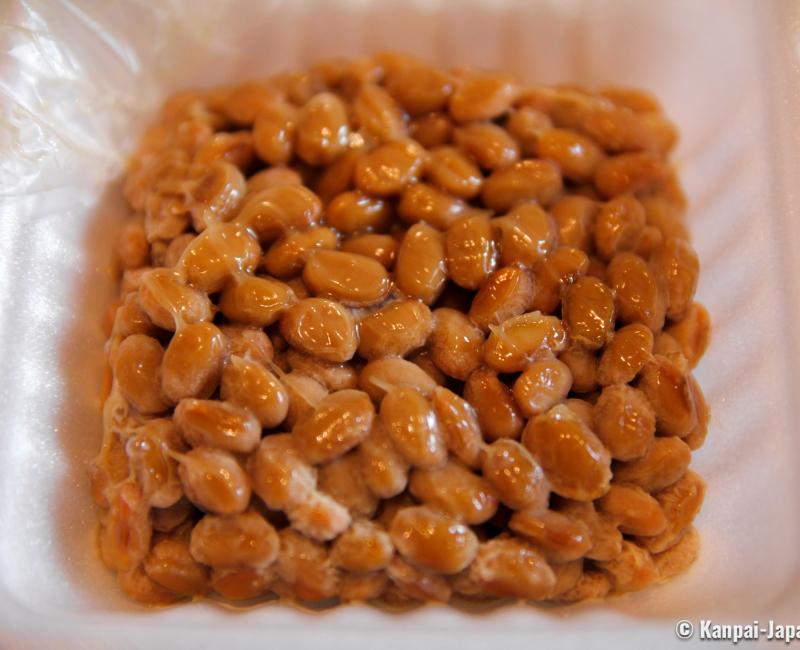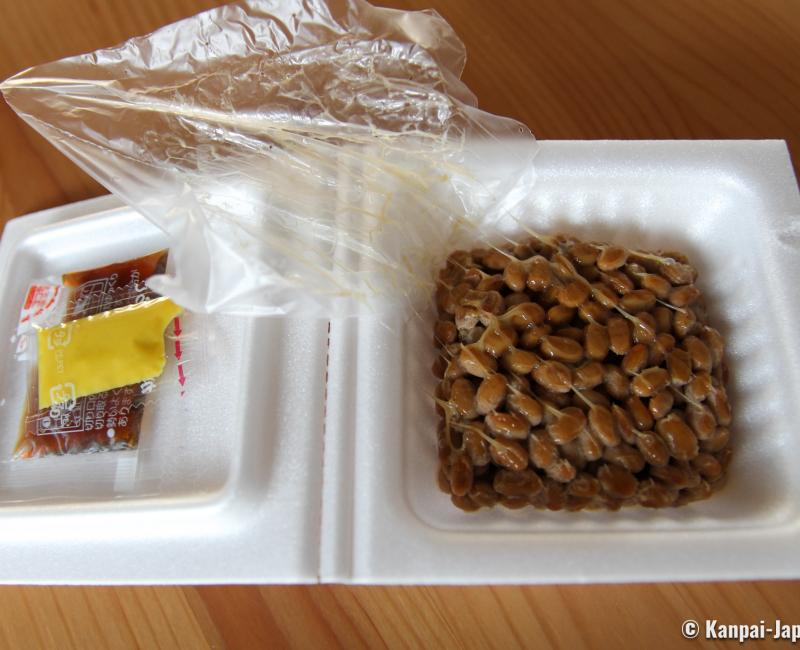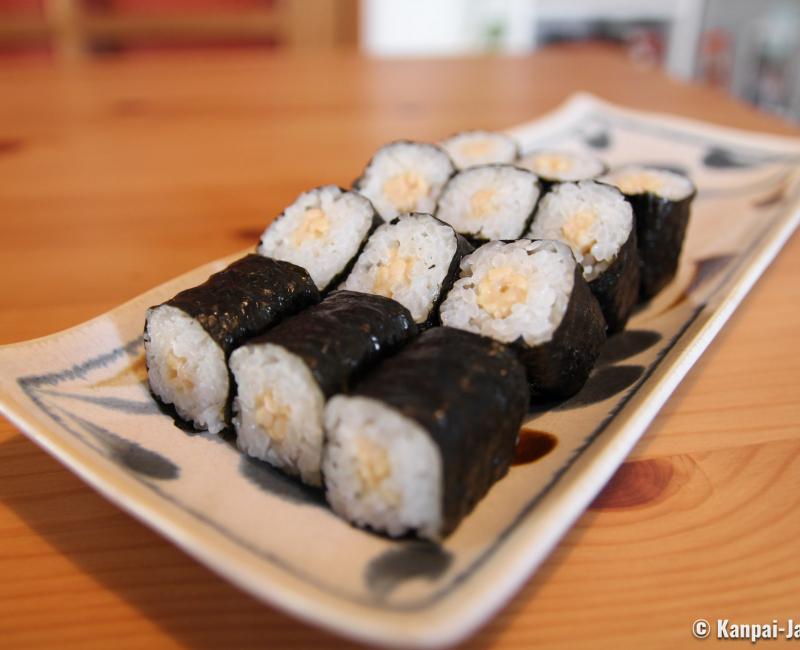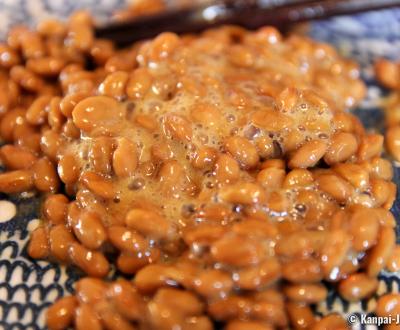Natto
The (In)Famous Fermented Soybeans
Natto is a traditional Japanese food rich in proteins and made from fermented soybeans. This very popular dish is said to have been first consumed in Japan more than 1,000 years ago. Often served with rice and mainly at breakfast, its gooey texture exudes a strong smell, which makes it one of the less appetizing local food for tourists in Japan.
In Japan, nattô is as important as cheese in France or durians in Indonesia: a "stinky" food but that is loved and eaten by the majority of the country’s population. A typical and traditional dish of the Japanese cuisine, natto is indeed characterized by a strong ammonia smell with a fluffy and stringy texture due to the fermentation of soybeans.
Tasting natto is often viewed as a challenge for tourists who need motivation to try their hand (mouth) at it. Its taste is actually softer than its smell and is said to be more enjoyable for grown-ups, that is to say for people whose taste buds have been educated to a wider range of flavors.
Healthy and with a high nutritional value, natto is packed with proteins, K2 vitamin, iron, magnesium and protects the intestinal flora. This "super food" is by the way considered one of the reasons for the Japanese’s longevity and is suitable for vegetarian and vegan diets. Outside the archipelago, it is purchasable in Asian shops (as imported frozen version) or at local producers who make fresh natto.

Traditional food made from soybeans fermentation
Natto is made from whole soybeans soaked in water during several hours and steam cooked. The fermentation is started after cooking by the addition of the Bacillus nattô bacteria / nattôkin in Japanese (納豆菌) which is a variant of the Bacillus subtilis bacteria.
About a thousand years old, nattô was discovered in Japan by chance: some boiled soybeans were left in rice straw, the natural wrapping used at the times to carry food. It is by the way in this original wrapping named wara-nattô (わら納豆) that natto has been traditionally sold.
Mito, the capital of natto in Ibaraki
Mito City in Ibaraki prefecture is said to be the birthplace of natto in Japan. The legend takes place in the 1080s, when chief commander Minamoto no Yoshiie (1039 - 1106) and his army were campaigning in the north-east of the archipelago.
The soldiers were attacked as they were boiling soybeans to feed their horses. They quickly wrapped up their preparation in rice straw and forgot about it for a few days. Then, they discovered the beans had fermented and their aspect had changed. Curious, one of the soldiers tasted it and enjoyed it. The food was offered to the general who enjoyed it as well and named it nattô (納豆), meaning "beans destined to the shogun" (将軍に納めた豆).
Today, natto lovers can make a pilgrimage to Mito area, where it is possible to visit 2 museums dedicated to this culinary heritage:
- Mito Tengu Natto Museum (水戸天狗納豆), providing a small exhibition focusing on the local specialty, the wara-natto, nattô wrapped in rice straw; and,
- Takanofoods Natto Museum (タカノフーズ納豆博物館), located at 40 minutes by car from Mito downtown and managed by Takanofoods, one of the biggest industrial producers in Japan.

Nattô in Japanese cuisine
As a general rule, natto is eaten at breakfast with a bowl of white rice. It is therefore served in most buffets at the hotel 🏨 and on the breakfast tray et the ryokan traditional inns.
Ready-to-eat from the fresh food aisle
Natto can be bought ready to eat from the fresh food aisles of the konbini, supermarkets and specialty groceries. The latter line up the best natto soybeans imported from throughout Japan, with some of them being produced locally and sustainably.
Each portion of natto is vacuum packed in a Styrofoam punnet, sided with a single-sachet of shoyu (soy sauce) or tare (its sugary version) and of karashi mustard. The small boxes are often sold in 3 packs sets for a price varying from ¥50 (~US$0.32) to ¥130 (~US$0.82) on average.
To prepare the natto, just remove the plastic film and mix the fermented soybeans with chopsticks for one minute to emulsify them. Once the texture becomes gooey and fluffy "with long strings", add the Japanese mustard and the soy sauce as seasoning. The natto is now ready to be eaten.
Other various preparations
Natto can also be prepared in other various dishes, such as:
- Nattôjiru (納豆汁), a kind of miso soup with natto, that seems to be a quite ancient dish,
- Soboro nattô (そぼろ納豆), mixed with daikon white radish, a specialty of Ibaraki area,
- Oshi nattô (干し納豆) which is dried natto.
Moreover, natto is a good combination with typical popular dishes that are eaten on a daily basis in Japan. What first comes to mind:
- Onigiri 🍙 filled with natto (納豆おにぎり),
- Maki filled with natto (納豆巻き),
- Soba noodles topped with natto (納豆そば).
Those who are keen on trying unusual food can also have a taste of:
- Some natto pizza (納豆ピザ); or,
- The natto ice cream (納豆アイスクリーム).
However, even in Japan, one must sometimes avoid eating natto, especially when planning to visit a sake 🍶 brewery. Prospective visitors are generally asked not to eat natto prior going to the brewery as the nattôkin bacteria, used in the soybeans fermentation, could be attached to the body or the clothes for a few hours and may disturb the work of the fungi used to make the Japanese sake.
Every traveler in Japan should try to overcome natto’s foul smell and sticky texture at least once, to form their own opinion. It’s like the Marmite: "You either love it or you hate it!"



